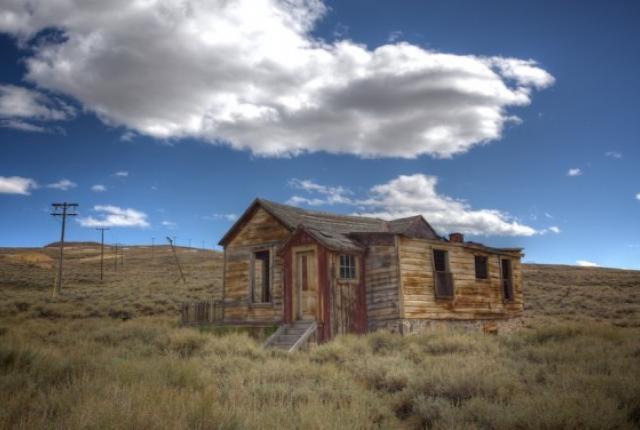The ghost town of Bodie, however, is another story altogether. A mining boomtown, it was the third most populous city in the state of California in 1880. By the 1940s sickness, wars, bad weather and exhausted mines had led to the town's desertion, and its isolated, inhospitable location made certain that it stayed that way; no one eyed this high desert waste, 8,000 feet above sea level between Yosemite and the lonely Nevada border, and imagined a shopping mall in its place.
Count us all lucky.
Only five percent of Bodie's structures are still standing, but considering how large Bodie was, that's still a lot for a ghost town - more than two hundred. And unlike Tombstone, Calico or any number of other "preserved" ghost towns in the West, it's not a tourist trap where you can buy cotton candy from gunfight-staging actors playing oldey-timey cowboys; the town is kept in a state of "arrested decay," which means the park rangers that patrol its dusty streets focus on making sure what's left of Bodie doesn't fall down, but they could care less about painting, weatherizing or cleaning up the decades-old trash that's heaped everywhere.

I bought a little self-guided tourbook at the gate when I visited. It's full of fascinating tidbits, which I'll be quoting below: By 1879 Bodie boasted a population of 10,000 and was second to none for wickedness, badmen and "the worst climate out of doors." One little girl, whose family was taking her to the remote and infamous town, wrote in her diary: "Goodbye God, I'm going to Bodie."
The phrase came to be known throughout the West.
The old general store has been turned into a small museum. Other than that, the buildings remain untouched. Sitting creepily in the back of that museum was this vintage hearse, which once plied the streets of Bodie with its morbid cargo. (Awesome band name: "Morbid Cargo.")
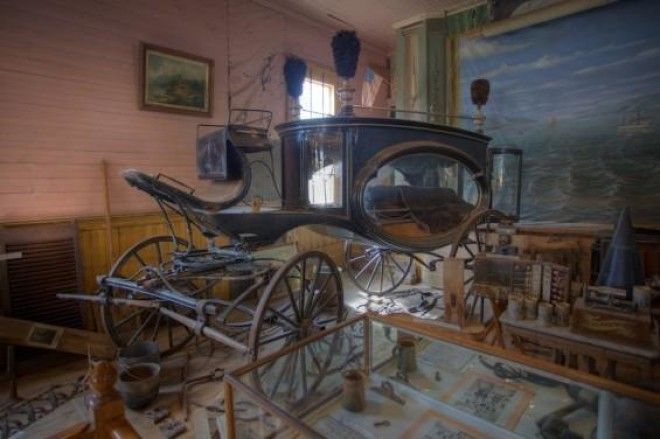
Killings occurred with monotonous regularity, sometimes becoming almost daily events. The fire bell, which tolled the ages of the deceased when they were buried, rang often and long.
Below: a hollow grave in the Bodie cemetery, used for hiding bottles of liquor during Prohibition.
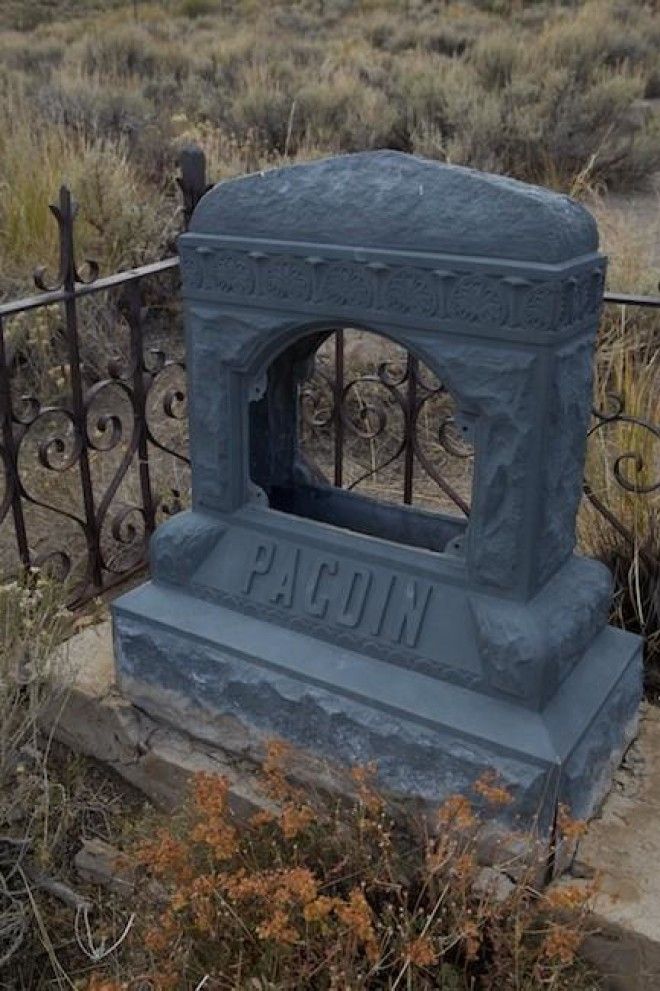
Robberies, stage holdups and street fights provided variety, and the town's 65 saloons offered many opportunities for relaxation after hard days of work in the mines. The Reverend F.M. Warrington saw it in 1881 as "a sea of sin, lashed by the tempests of lust and passion."
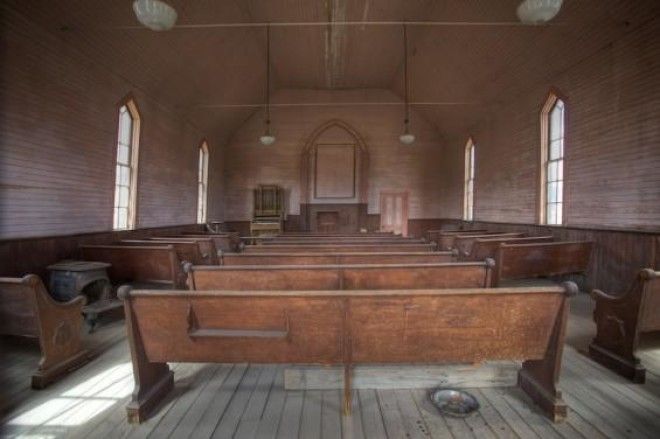
Above: the Methodist church, erected in 1882 and abandoned in 1932. "Since then, the interior has been badly vandalized, and the Ten Commandments painted on oilcloth which once hung behind the pulpit ('Thou shall not steal') has been stolen."
Below: a saloon, as seen through a hole in the door.

I'm not sure if this sign is original, but it leads to the approximate location of Bodie's red light district, where ladies of the night "lived and worked in a row of one-room cabins called 'cribs.'"
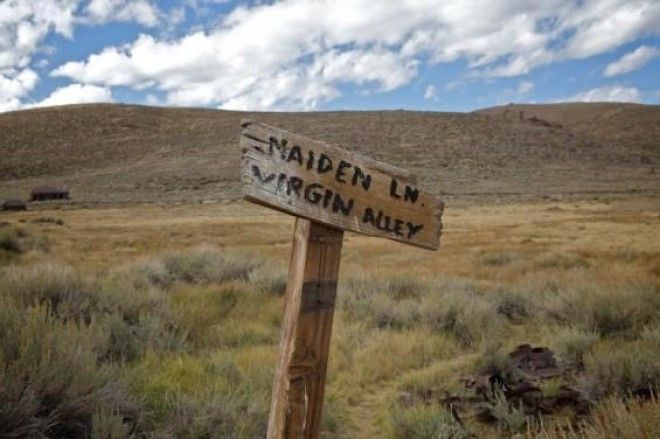
Rosa May was the town's most famous prostitute. Born in Pennsylvania, she ran away at age 16 and drifted west, where she worked as a prostitute in mining camps to survive. She moved to Bodie in 1890, where in 1911 she died after caring for sick miners during a pneumonia outbreak. (Yep, a hooker with a heart of gold.)
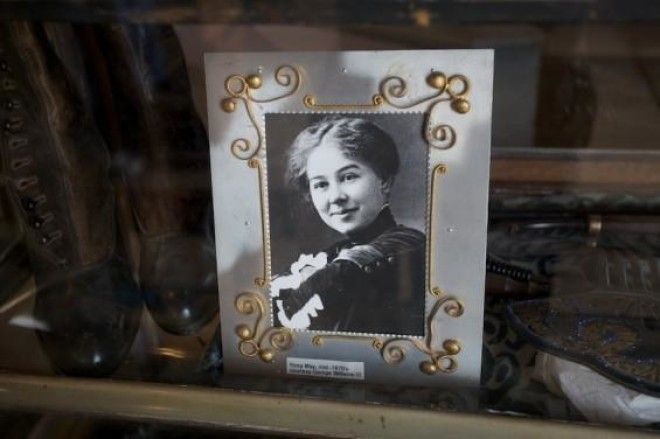
Considered a hero by the miners, she was nonetheless buried beyond the gates of the town cemetery because of her profession, alongside murderers and other Bodians of ill repute. Her sad wooden headstone, split from age and temperature fluctuations, reads Rosa Elizabeth White "Rosa May"
Born Jan. 1855
Died in Bodie, in the winter of 1911-1912.
Sacrificed herself for Bodie miners.

In the 60s, a descendant of one of the miners she saved erected a new tombstone for her a few yards away:

They might not have been able to save Rosa May, but they did save her red light, which hangs in the town's small museum.
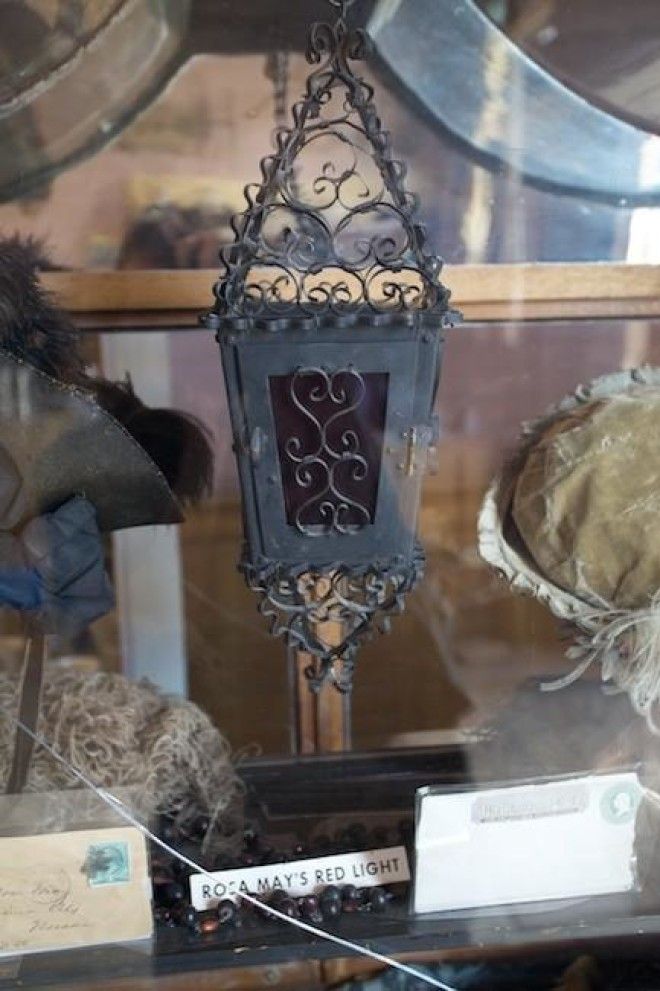
Lots of fascinating junk still sits rusting around Bodie. Old cars especially:
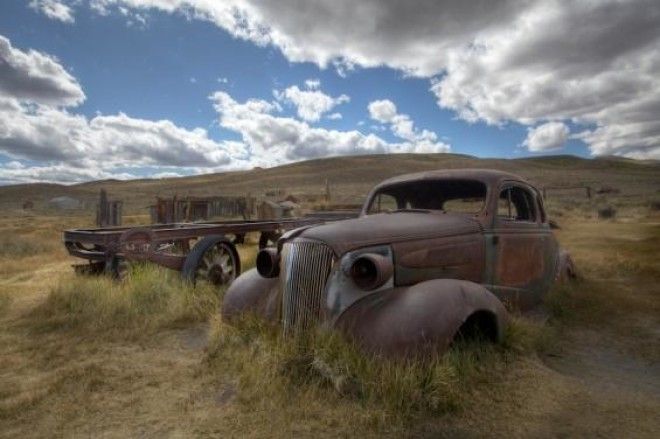
Inside this house, you can still see -- if you squint -- wire hangars in the closet.
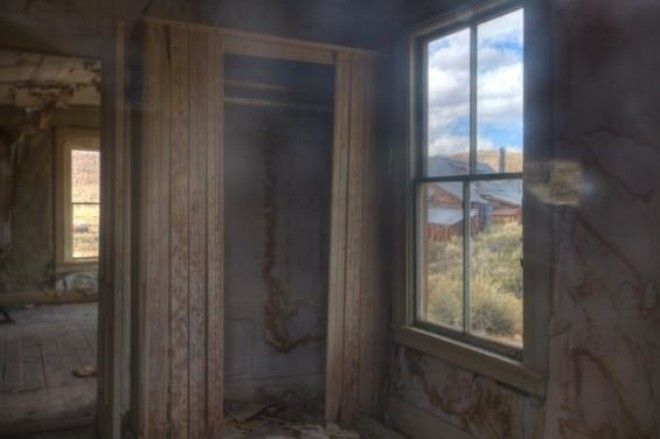
All that's left of the old bank is the vault. The rest of it burned in the fire of 1932, which devastated much of the town.
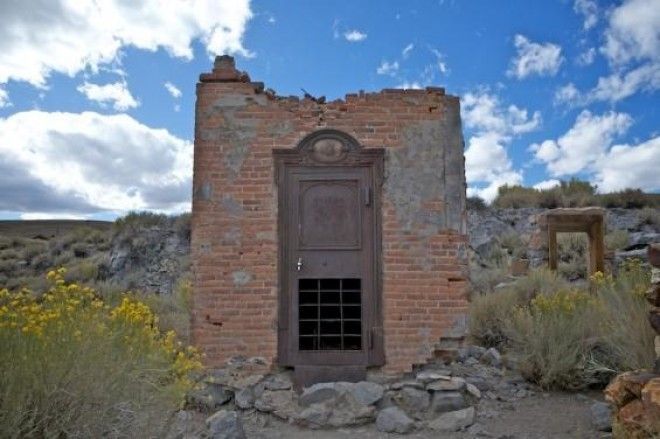
There aren't many houses in Bodie you can actually go inside, with a few super dangerous exceptions, like this place. Through the window you can see the old Standard Mine and Mill, the massive success of which took the town from a population of 20 in 1878 to 10,000 just two years later. Between 1860 and 1941, it produced nearly $100 million in gold and silver.
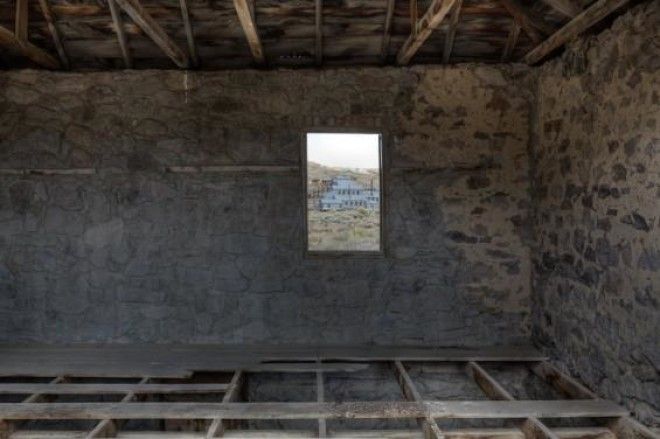
The drive to Bodie is a beautiful one. I had to stop and take a picture of this pasturing herd of sheep.
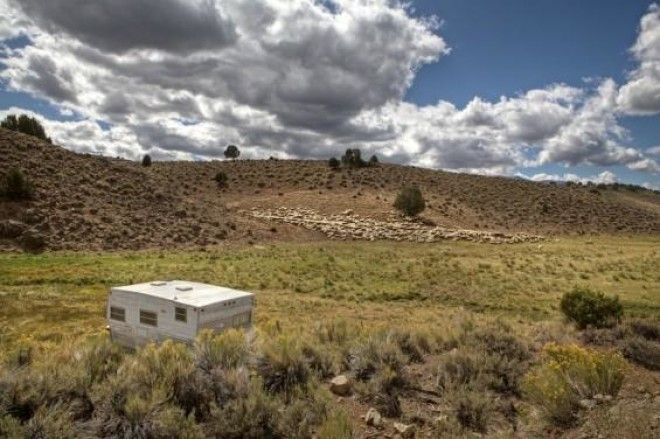
Most houses in Bodie are filled with the same things that houses in ghost towns everywhere are filled with: broken old crap. See what I mean:
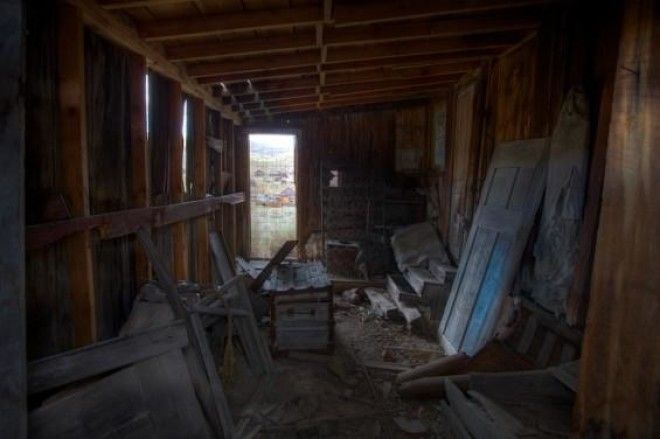

I kept thinking how lonely this place must be at night.
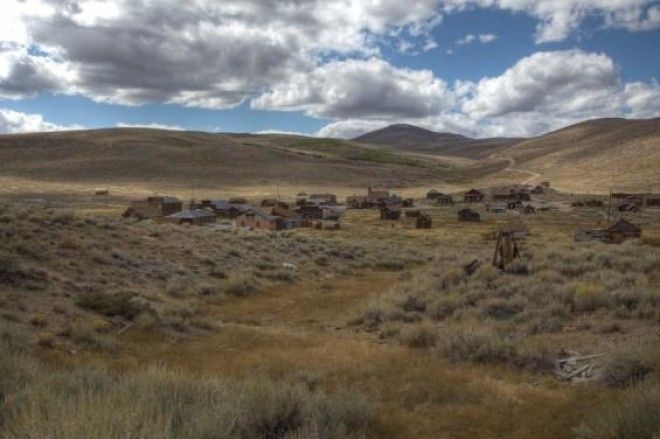
Believe it or not, Bodie is open year-round -- even in the dead of winter, when snow piles up five feet high and they stop plowing the roads. There's always a park ranger or two on the property to ensure that vandals don't wreak havoc or start fires, so if you decide that 20 miles on a snowmobile is doable, they'll happily collect your five dollars and let you wander around (in snowshoes). I think that's kinda cool.
I found this postcard in an antique store a few weeks ago. It represents all that Bodie is not:

